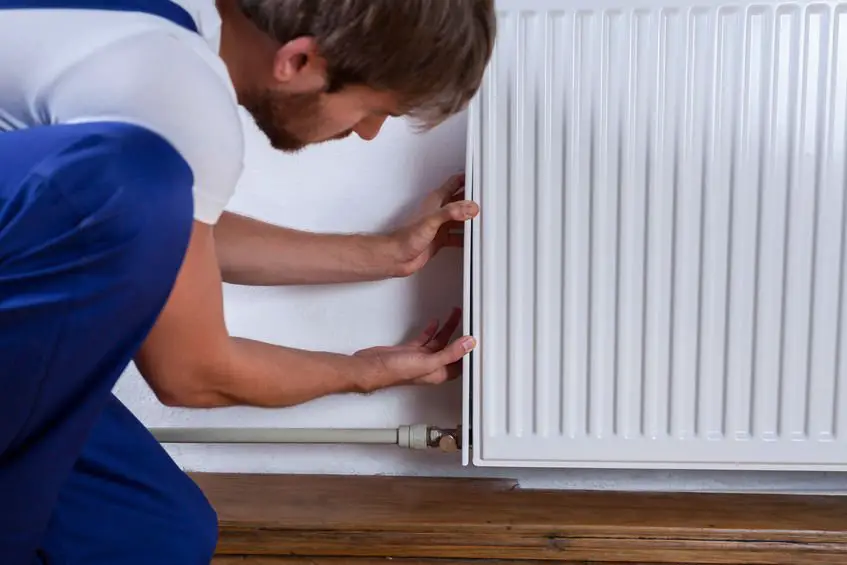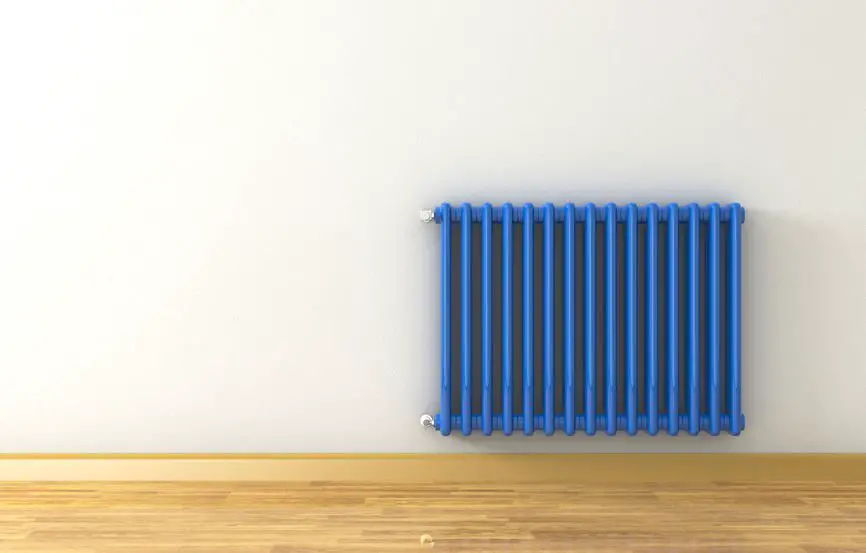Are you looking for advice on can you paint radiators with emulsion? We’ve created this article to address the issues you may encounter and you can decide if it’s a good idea to apply emulsion paint to your radiators.
Having dull radiators is not a good look, usually, they stand out in a room and when they are gleaming with great colour it finishes off the room perfectly. While you can apply various colours, radiators are usually painted white. But they don’t necessarily need to be, In fact, you can get a range of different radiator paints.
So you may be tempted to give your radiator a new lease of life and cover over the yellowing dull colour that often develops over time by using a coat of leftover emulsion paint.
Subscribe to our newsletter as we release new site features and publish new home DIY projects.
Answer
Can you paint radiators with emulsion?
It’s a question that gets asked a lot and that leads to misinformation being posted online as everyone has an opinion on the matter, so, can you paint radiators with emulsion? While it might not be a popular choice for painting professionals and nearly all painters and decorators will tell you no, you should not paint a radiator with emulsion. There are reasons although. So stay with us.
Is it a black and white question? well no. We’re going to address it from a different angle, because yes, in fact, you can paint radiators with emulsion paint. However, a better question would be should you paint your radiators with emulsion? The answer to that is definitely no.
So Why Shouldn’t You Paint a Radiator With Emulsion Paint?
Radiators disperse a lot of heat and can dry out emulsion to the point of cracking and peeling. While you can get a decent finish using emulsion paint you are going to need to re-paint them a lot sooner than if you had just used a specialised radiator paint.
The heat will eventually sink the paint and cause cracks to appear and flakes to form. This is usually gradual so will happen over time.
You can combat this with a clear radiator overcoat that seals and create a film over the emulsion paint but that’s a lot more work and a lot more money and you could achieve a better finish from the start by simply using a specialised radiator paint or a paint for metal that will last and survive through any bumps and bashes.
If You Are Going To Paint Your Radiator With Emulsion
Sometimes we are set on an idea that no one can change, this could be you. Now while we don’t advise you paint over a radiator with emulsion paint if you are going to do it you need to prepare the radiator so that it’s in the best possible shape to apply paint.
In fact, this part is no different from applying normal radiator paint. It’s all about preparation. Sand down the radiator to remove any bumps, nicks or imperfections, you want to create a smooth surface for the paint. Wash it down with sugar soap to remove any dirt or grime before starting the painting process.

It’s advisable to remove the radiator from the wall, it makes things much easier and you can get into all the crevices easily. However, if you don’t want to do that you can use a radiator brush to get behind them. This is a tricky, arduous step to take and we always remove the radiator before painting.
Make sure all the heating is turned off, that the radiator is cold before applying paint and do not put it back on until your painting process has completely finished. That means do not turn it on between coats.
Apply your first coat of paint once you’ve completed the sugar soap process and wiped off the residue. The radiator should be dry. Once the paint has been applied, leave it to dry and apply a second coat which will likely be needed.
Then if you have taken the step to paint with emulsion, apply a clear radiator overcoat to lock in the paint. You will likely get a sheen off the finished look which might not be what you had in mind. This could be a reason for avoiding emulsion paint altogether.
Steps to painting a radiator with emulsion
- Remove the radiator from the wall.
- Clean down the radiator with sugar soap. Unsure what sugar soap is read here.
- Sand down the radiator to remove any bumps and nicks.
- Wipe down the radiator with a cloth.
- Ensure all heating is off and the radiator is cold.
- Apply your first coat of emulsion and wait for it to dry.
- Apply the second coat of emulsion.
- Once dry, apply a radiator clean overcoat to seal the paint.
- Do not turn the radiator back on until the paint is completely dry.
Again, we advise specialised paint and not emulsion for radiators.
Summary
So can you paint a radiator with paint? Well yes, but you shouldn’t. That’s the advice every professional painter and decorator will give you. We scoured the internet to find people who have tried it and the results vary with some getting lucky with the paint staying on and others suffering from chipping and flaking paint. So to ensure you have a professional paint finish on radiators we recommend specialised radiator paint.
Sources:
